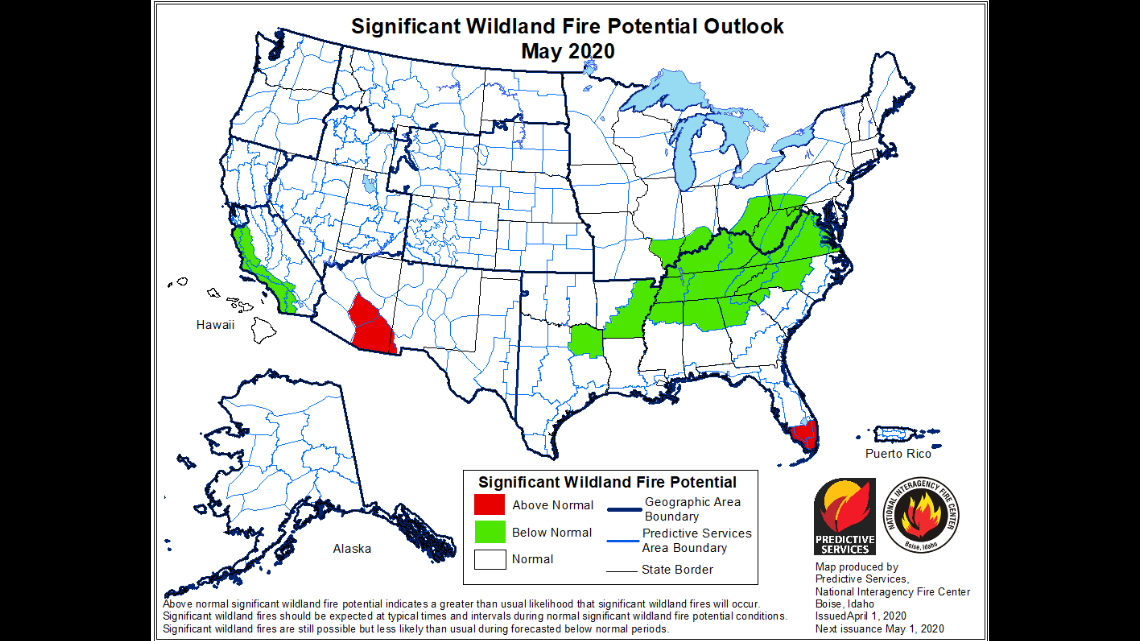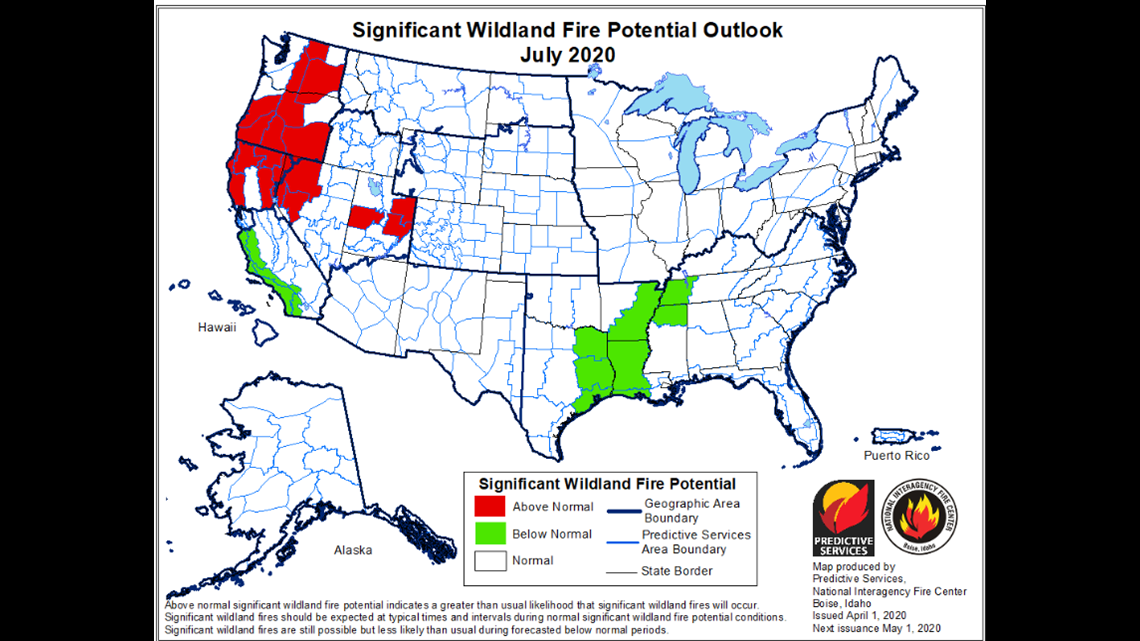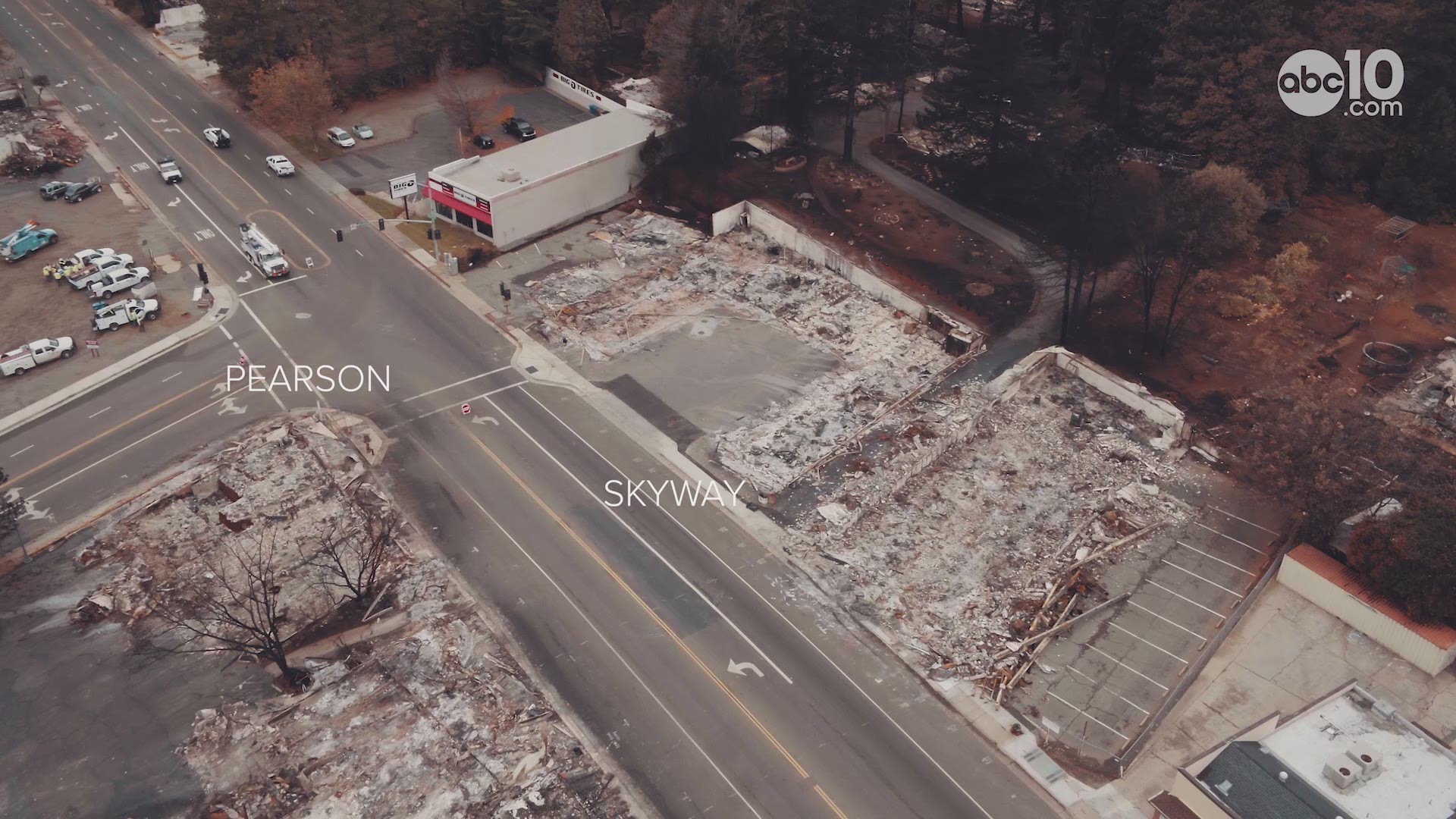SACRAMENTO, Calif. — The latest National Significant Wildland Fire Potential Outlook has been released from the National Interagency Fire Center for the months of April - July.
Here's a brief overview:
- April: Normal wildfire development
- May: Normal wildfire development
- June: Above Normal Wildfire Development for the Sierra for elevations above 6,000 feet.
- July: Above Normal Wildfire Development for the Sierra for elevations above 6,000 feet along with higher elevations.
How the National Interagency Fire Center reached its findings.
Past Weather and Drought
January and February were below average for rainfall in Northern California. We did receive a few healthy storms during the month of March, but it wasn't enough to offset the effects of the record dry conditions in the previous month.
Taking all of these factors into consideration, it's no surprise March was a month of drought development and expansion in the state of California. By mid-month, most of California was dealing with abnormally dry or moderate drought conditions.
As we move into April, warm and dry weather conditions are expected to return. In fact, the outlook calls for warmer and drier than average conditions through July, although brief periods of cool wet weather are still expected into early June.
New ignitions
New fire starts are expected to occur more frequently than usual during the outlook period. However, at lower elevations, you will find a new green grass crop. This will aid firefighters in quickly gaining control. That's not the deal with middle elevations (3,000 - 6,000 feet). These areas will continue to be the most vulnerable to fire spread. This elevation range is generally free of snow cover and a new green grass crop along with dead and dormant fuels in this area will be sufficiently dry to carry fire any time there are extended dry, precipitation-free periods of a week or more. Significant fire potential will be slightly higher in these areas, but still at the upper end of the normal range through May.
Significant large fire potential is expected to remain normal in all areas for April and May.
The snowpack is expected to completely melt by early June, a full month earlier than usual. Also, the first precipitation of the 2019-2020 rainy season had very low snow levels, so dry fuels and soils can be found under the blanket of the snowpack. This means that there will be even less beneficial runoff in the late spring and early summer, and this will lead to an earlier date of critical fuel dryness at middle and high elevations.


Areas below 6,000 feet in the Northern Sierra will have Above Normal Significant Fire Potential in June, and higher elevations will follow in July.
The dry outlook means that the low elevation fine fuel crop will likely be lighter than average. Even if these fuels cure out earlier than usual in May and early June, new ignitions will be easier to control compared to the recent 4 years with above-normal annual grass crops. Significant fire potential remains normal for all other areas in June. Lightning events are expected to be near normal this summer in terms of frequency and the number of strikes. Considering the expected dry condition of fuels, a large portion of the region has above normal significant fire potential in July.




Watch: It's the unicorn of all trains. Recently seen fighting the Delta Fire in Shasta County, it's the pride of the Union Pacific Railroad. John Bartell meets "Adventure" Dan Ryant, the man who got to ride it.

